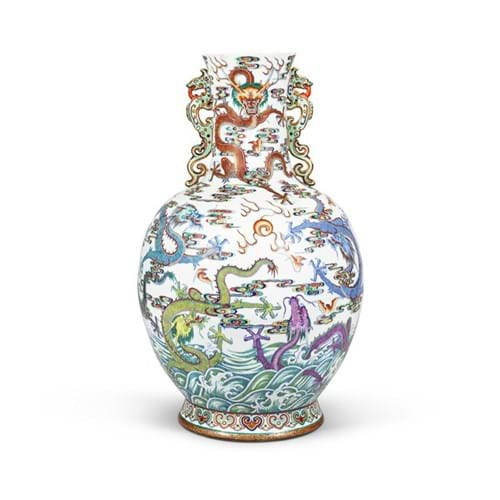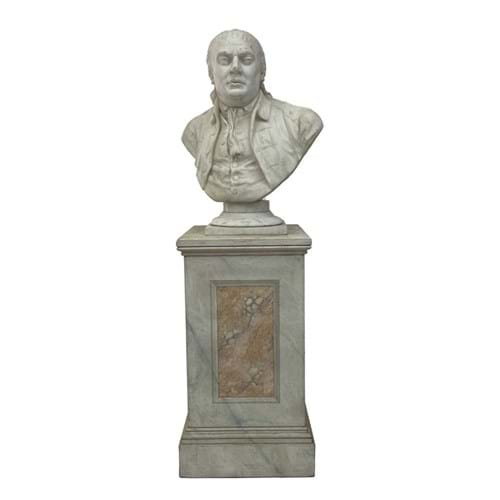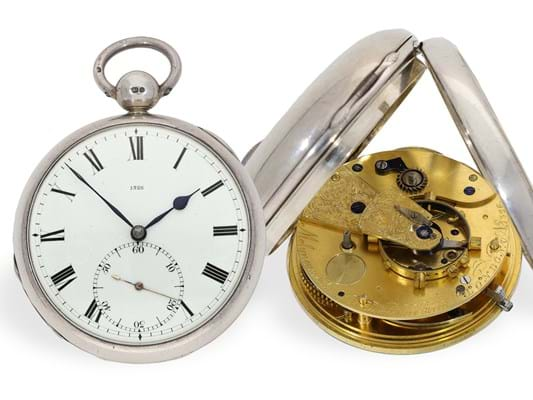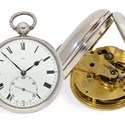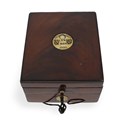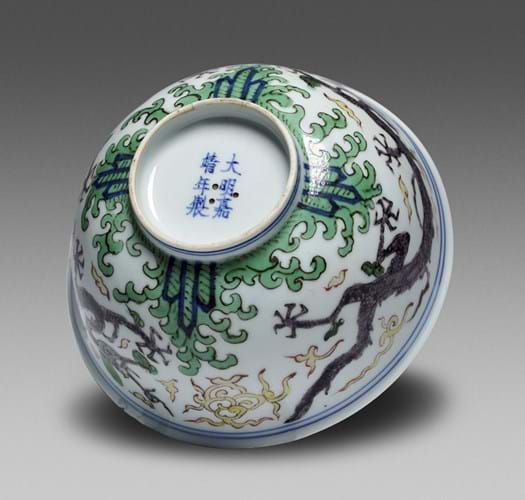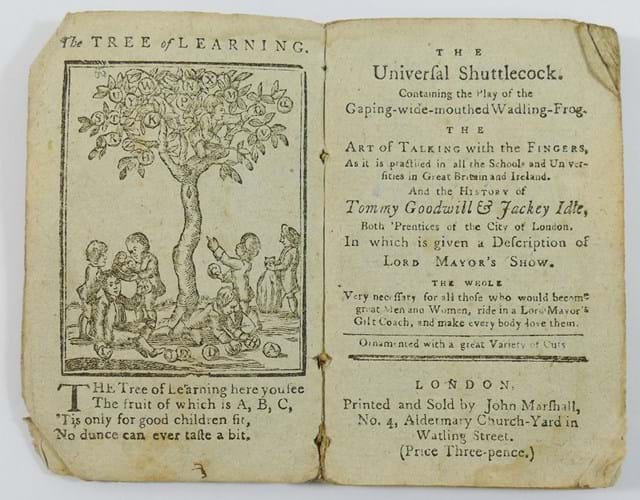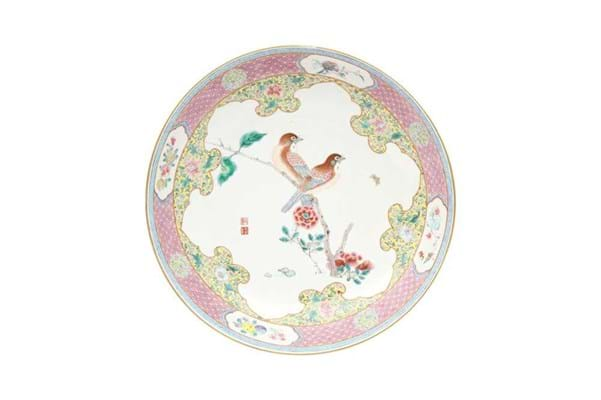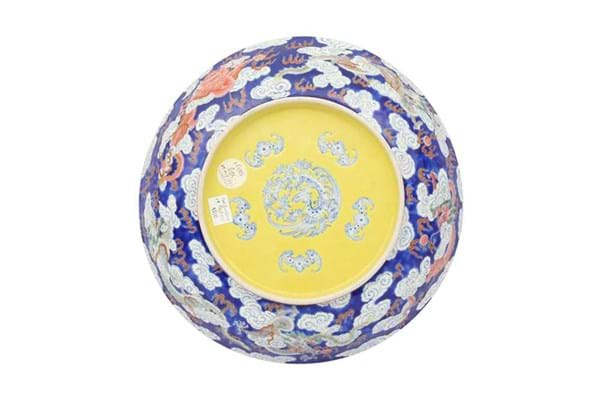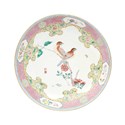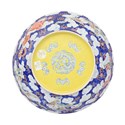1. Qianlong 'nine dragon' vase – £1.5m
The Important Chinese Art sale at Sotheby’s on May 11 was topped by this exceptional Qianlong (1735-96) mark and period doucai 'nine dragon' vase. It came for sale from a Scottish private collection and by family descent since the 19th century.
Decorated with nine dragons soaring across the sea and sky, this vase is one of just two known – the other in the Porzellansammlung, Dresden. As it is painted in mirror image, it is probable that the two vases originally formed a pair. Their rainbow colours reference the Chenghua (1465-87) porcelain (including the highly esteemed chicken cups) that was much admired by the Qing.
At 2ft 2in (67cm) high, this vase has been reduced a little at the neck but the imperfection was more than reflected in the estimate of £100,000-150,000. Worth perhaps £5m in perfect condition, it took £1.5m – the best-selling lot of the recent round of UK Asian art sales.
2. Marble bust – £9200
This late 18th century marble portrait bust of a gentleman is traditionally thought to depict the prominent British Whig statesman Charles James Fox (1749-1806). By a sculptor from the Circle of Joseph Nollekens (1737-1823), it was previously in the collection of the Prime Minister Sir Robert Peel (1788-1850).
In 1900 it had been sold as part of the Peel Heirlooms auction held at Drayton Manor, Tamworth by local auctioneers Robinson, Fisher and Hardy. It came for sale at David Lay in Penzance on May 12 together with its raised two-tone marble plinth. Under UV light some small areas of restoration are visible to the extremities, but it was attractively estimated at £3000-5000.
The hammer price was £9200.
3. Robert Molyneux deck chronometer – €31,000
This English deck chronometer is a Molyneux No.1326 – made by the London maker Robert Molyneux around 1830. The silver case is hallmarked for 1829 while the signature Molyneux & Sons, 44 Devonshire Street indicates it was made sometime between 1830, when Molyneux’s sons joined him in the business, and 1832 when the firm moved to new premises at 30 Southampton Row.
The major part of Molyneux’s business was concerned with precision watches and chronometers. Exactly when he came to London is not known, but in his early years he had been keen student of Thomas Earnshaw.
By c.1800 he had started up in business on his own at Devonshire Street and must have quickly gained a fine reputation, as in 1805 he was asked by the Board of Longitude to adjudicate on inventions made by both Earnshaw and John Arnold.
Generally, a deck watch was used as a secondary timepiece, to be wound and synchronised daily with the ship's official clock. Its prime requirement was isochronism, the consistency of timekeeping.
This very fine chronometer, very much in the manner of Earnshaw, was in exceptional condition with matching numbers to the dial and movement, original blued steel hands and the original box with ivory panel reading Deck Watch Molyneux No.1326.
It came for sale at Cortrie Special-Auctions in Hamburg on May 15 with a guide of €3000-6000 but sold for €31,000.
4. Jiajing dragon bowl
This Jiajing (1525-66) mark and period wucai dragon bowl was offered for sale at Woolley & Wallis in Salisbury on May 17. It came by descent from the collection of Admiral Robert Coote (1820-98).
Enlisting in the Royal Navy in 1833, he was made commander of HMS Volcano from 1845, HMS Victory from 1860, HMS Gibraltar from 1864 and HMS Arethusa from 1867. He served as commander-in-chief of the China Station between 1878-1881. The China Station, established by the British Royal Navy in 1865, had bases located in Singapore, Hong Kong and Wei Hai, and was responsible for overseeing the coast of China and its navigable rivers, the western part of the Pacific Ocean and the waters surrounding the Dutch West Indies.
The base of the 7in (17.5cm) diameter bowl is drilled with three small holes in the shape of a triangle – a curious practice (perhaps an inventory or collectors’ mark) that appears to have been common in Islamic countries. The same pattern is found on 54 Ming porcelains in the Topkapi Museum collection, Istanbul.
Estimated at £8000-12,000, it took £80,000 from a phone bidder.
5. Children’s book from c.1790 – £2200
This rare 18th century children’s book emerged for sale at Pippa Deeley in Bodiam, East Sussex on May 14. Estimated at £20-40, it did rather better selling at £2200.
The Universal Shuttlecock, Containing the Play of the Gaping-Wide-Mouthed-Wadling Frog... was published in London by the influential London printer John Marshall (1756-1824) around 1790. Marshall, who had inherited his father’s business at 4, Aldermary Churchyard in Watling Street in 1778 was among the first specialists in children’s literature describing himself in promotional literature as the ‘Children's Printer’. His catalogue of May 1793 listed 113 children's book titles, two children's magazines and various teaching aids.
The Universal Shuttlecock is typical of his stock in trade featuring a woodcut frontispiece titled The Tree of Learning, 49 text illustrations and a three-page publisher's advertisement at the end. Only half a dozen copies of this edition are known although two have sold at auction in recent memory: one at Christie’s in November 2001 for £2600 and another at Sotheby’s New York for $1800 in December 2014.
6. Qianlong famille rose ‘birds’ dish – £130,000
Chiswick Auctions’ sale of Asian art on May 16-17 was topped by this Qianlong mark and period famille rose ‘birds’ dish. Estimated at £30,000-50,000, it took £130,000.
The dish, a front and back cover lot in a Christie's Amsterdam sale back in 1993, is typical of the synthesis of Eastern and Western technological and artistic traditions that characterise wares from the long reign of the Qianlong emperor. This mixture of styles is highlighted by the very different decoration to the three planes of the piece: the sides (five-clawed dragons against a lapis blue ground), the interior (birds and a border decoration akin to decoration on Beijing enamels) and the base (a phoenix encircled by five bats against an Imperial yellow ground).
Unusually, the mark of the emperor is codified within two seal marks on the interior of the piece, while the palace mark, Gu yue xuan, is carefully placed within a decorative border around the foot.


